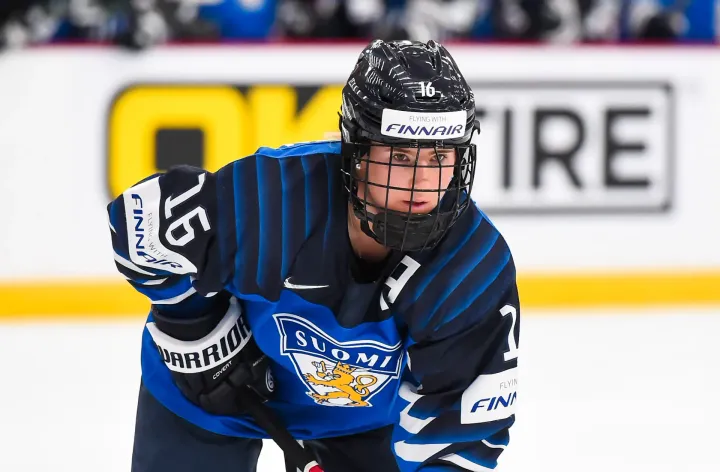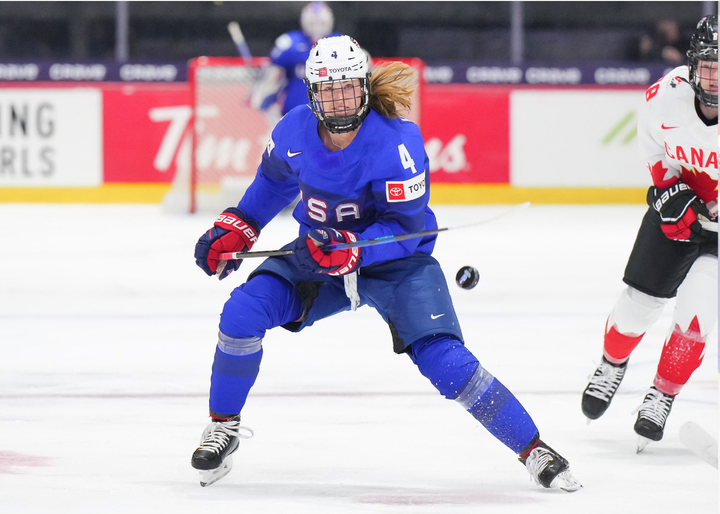Building the Milwaukee Grey Wolves
Or what happens when someone takes a fun idea far too seriously
With the future of professional women’s hockey in North America shrouded in uncertainty, The Ice Garden recently decided to create its own league — on paper.
The concept was simple: six TIG contributors, serving as general managers, would each select a “starting six” (three forwards, two defenders, and a goalie) in a fantasy draft to be the core of their team. General managers could draft any post-collegiate players, but players who are currently in college — like Alina Müller and Maddie Rooney — were off-limits.
Related
Of course, I jumped at the chance to be one of the six team builders. When draft day arrived, it immediately became apparent to my colleagues that I got way into the idea of building my own team. And yes, I made tables and charts.
Finding a Home
The first thing I wanted to do was identify an ideal location for a professional women’s hockey team in North America that was also a new market. This ruled out the Greater Toronto Area, Montréal, Calgary, Burlington, Mississauga, Ottawa, Vaughan, Boston, Worcester, Newark, Brooklyn, Connecticut, Minnesota, and Buffalo. I also wanted to find a market that has already shown a passion for women’s hockey, so I kept college hockey programs in mind.
I decided to start by scanning the NWHL’s map of Jr. NWHL affiliates to get an idea of which states had engaged girls’ hockey programs. Why? I wanted to find consumers. From my experience as a member of the media, a lot of girls hockey teams and young families attend pro women’s games. Looking for where those teams played seemed like a natural place to start.
A cursory scan of the map and a closer look at the Jr. NWHL team directory proved to be insightful. It didn’t take long for Wisconsin, Pennsylvania, and Illinois to emerge as my leading candidates. Wisconsin had nine Jr. NWHL affiliates; Pennsylvania had seven; and Illinois had six.
As helpful as the Jr. NWHL directory was, it offered only a fraction of the complete girls’ hockey landscape in America. I needed to know which states and regions had the most girls’ hockey registrations (18 years old and younger). I wanted hard data. So, I turned to USA Hockey’s registration numbers from 2018-19 to get some answers.
Needless to say, my hypothesis that Wisconsin, Pennsylvania, and Illinois were ideal candidates looked rock solid. Admittedly, this is just surface-level research, but it seemed like the adequate amount for a hypothetical team in a hypothetical league.
I decided on Wisconsin because of the Badgers hockey program, its proximity to other significant cities in the Midwest, and the high volume of elite players who have ties to the State of Hockey next door. Wisconsin also has its own NCAA D-III conference (and other teams outside of the WIAC) and is home to an AHL team, the Milwaukee Admirals. The Nashville Predators, the Admirals’ NHL affiliate, have already shown in interest in pro women’s hockey by hosting the 2019 NWHL All-Star Game.
Safe to say our return to Madison is lit 🚨🚨🚨 pic.twitter.com/kOGaEu3dZn
— Wisconsin Hockey (@BadgerWHockey) March 25, 2019
Milwaukee made sense as the specific location not only because of the presence of the Admirals, but also because it is Wisconsin’s most populous city. It’s also closer in proximity to Chicago. Geographically, Milwaukee has the potential to be appealing to talent from Illinois, Iowa, and Michigan. As a bonus, “Milwaukee hockey” has a nice ring to it.
For my team’s identity, I decided on the Milwaukee Grey Wolves. Wolf packs survive through strategy, shared responsibilities, and strength in numbers. In other words, they are the epitome of teamwork. They’re also just as fierce as an ornery badger. It was a perfect fit.
Draft Strategy
Heading into the draft, I wanted to give myself some guidelines. As a veteran of numerous fantasy sports drafts, I know how important a flexible strategy can be. I came up with three guiding principles for the players I wanted to target:
- I wanted elite players who have already proven themselves in major international tournaments. I also wanted players who were either in their prime or were rising stars with tons of potential.
- I wanted popular, marketable players. I identified these players by their social media presence, their profiles on eliteprospects.com, and by how well known they are outside of the women’s hockey community. In other words, I wanted some household names that would help sell tickets and move merchandise. I wanted my team to have financial stability. Having at least one of sport’s biggest names would help make that happen.
- Finally, I wanted to consider players who had ties to the Midwest, specifically Wisconsin. Even if our hypothetical league offered a living wage to its players, I wanted to feature local talent that fans could connect to. So, I reached out to Nicole Haase, who knows more about Wisconsin women’s hockey than anyone I know, to help me identify some candidates.
In addition to those guidelines, I also took the structure of the draft into consideration.
Because there were only six teams, it made sense to wait until the final round to select a goalie. Each team was guaranteed to get an elite goaltender, but not every team was guaranteed to land a truly elite defender or center. So, the blue line and the center position were my priorities.
Before the draft began, I had Jenni Hiirikoski as the player I coveted the most, followed by Brianna Decker, Megan Keller, Marie-Philip Poulin, and Hilary Knight (in no particular order).
The Execution
It didn’t take long for the early stages of my plan to be foiled as a result of drafting 5th overall. I watched helplessly as Decker, Hiirikoski, and Poulin went off the board. Fortunately, I came out of the first two rounds with Keller, my franchise defender, and Knight, the most popular player in women’s hockey. Knight is also the all-time leader in goals, shots, and points at the University of Wisconsin.
I was still wincing from missing out on Annie Pankowski when it was my turn to pick in round three. I decided to go with 2019 Patty Kaz winner Loren Gabel, who I consider to be one of the best young players in the world. Suddenly, I had two natural wingers and one D on my team. So much for my plan to prioritize the blue line and the center position.
With the 20th overall pick, I made the steal of the draft by taking Kendall Coyne Schofield off the board. As far as I’m aware, Coyne Schofield hasn’t played center since her collegiate career, but I just couldn’t pass up on a marquee name with ties to the Midwest who has preexisting chemistry with Knight.
Hilary Knight scored the goal but Kendall Coyne's celly should be worth another point all by itself. #4NationsCup pic.twitter.com/h5gLOznYcc
— The Ice Garden (@TheIceGarden) November 12, 2017
I had a big decision to make in the fifth round. Emily Pfalzer, who played with Keller for a year at Boston College, was still on the board, but I wanted a player who might be a better fit with Keller’s aggressive style of play. I decided on Finland’s Ronja Savolainen. At 21, she’s already one of the best defenders in the world. Like Keller, she also logged a ton of minutes at the 2018 Olympics and the 2019 Worlds, making her an ideal fit for my first pair.
Finally, in round six, I chose Ann-Renée Desbiens as my goaltender. The 2017 Patty Kaz winner is, hands down, the best goaltender in Badgers history and arguably the history of women’s collegiate hockey. Coming away with two Badgers for my Wisconsin-based pro club felt like a big win.
Lessons Learned
In November 2018, NHL commissioner Gary Bettman said that there wasn’t enough talent in women’s hockey to support two leagues. At that time, there were 10 pro teams in North America spread across the CWHL and NWHL.
Although we drafted a total of 36 players in TIG’s fantasy draft, the caliber of the players who weren’t selected was remarkable.
Really, there are too many noteworthy players to name, but in the interest of proving a point let’s rattle off some of the superstars who went undrafted. North American stars like Amanda Kessel, Natalie Spooner, Brianne Jenner, Dani Cameranesi, Megan Bozek, Jill Saulnier, Sarah Nurse, Alex Rigsby, Alex Carpenter, Brigette Lacquette, Laura Stacey, Blayre Turnbull, Ann-Sophie Bettez and Jocelyne Larocque were undrafted. Furthermore, we barely scratched the surface European and Asian talent in our draft. Nana Fujimoto, Sara Grahn, Noora Tulus, Alena Mills, Denisa Krizova, Olga Sosina, Anna Shokhina, and countless others were all left on the board.
Those names and countless others represent just how deep the current talent pool of post-collegiate players is. Really, the 36 players who were drafted and those listed above are just the tip of the iceberg.
There’s a veritable ocean of talent in women’s hockey, and it continues to grow deeper and wider with each passing year. Remember, it’s been just 21 years since the first women’s Olympic hockey tournament in Nagano and only a dozen years since the CWHL was founded. Consider how close Finland came to winning gold at the 2019 Worlds. Consider the display of skill we saw at the 2019 NHL All-Star Skills Competition. As the game grows, so too will the skill of the girls and women who play it.
As great as the game is now, it’s only going to get better. That is the kind of thought that’s worth investing in.





Comments ()